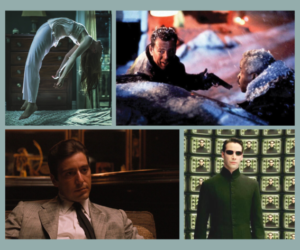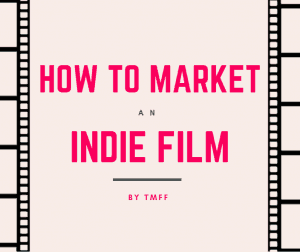Do you know what viral marketing is? Really, no, you have no idea? Well then, it’s one of those things that you’ve been doing for years, but without knowing the fancy word used to describe it. Like, for instance, procrastinating, or even better, the fact that you’re rather coruscating at it.
Viral marketing is any sort of action that you willingly undertake, and through which you promote a certain product or service that a third party offers. Remember that pair of sneakers which you almost felt obliged to recommend to virtually anyone you met? Well, that was you engaging in viral marketing for the sneaker company. And while I would definitely advise against adding a ‘Marketeer at Adidas’ position on your LinkedIn profile as a result of this newfound piece of knowledge, I will advise you a wee bit on how you can use viral marketing for your film project.
Genre fit is neat
Naturally, one of the most important determinants of success for your viral marketing campaign is the genre of your production. Basically, it has to get people talking – not necessarily the film itself, but rather a comprising theme, element, position or message. While a documentary feature which explores the intricacies of doorknobs is undeniably fascinating, it might not generate the buzz you expect.
Horror flicks have generally attained the best results, with the likes of Paranormal Activity and The Blair Witch Project achieving some eye-catching results. The latter’s campaign might be easily considered one of the pioneers of viral marketing in the film industry: with a meagre budget of 60K USD, it made around 225 million USD in box office revenue. Through a website which showcased what visitors thought to be authentic evidence of mysterious disappearances in a Maryland forest, all spiced up by occult phenomena, the film generated quite some buzz. Enough that its earnings were 3650 times as big as the production budget, which is rather decent, in all honesty.
Budget or no budget, that is the question
Of course, there’s the question of how much money you can spend on marketing activities as a whole. Fortunately, viral marketing is generally cheaper than traditional spread through TV ads, billboards and all that, because it is mainly concerned with planting a seed. Everything that follows is pretty much out of your hands, but as long as you do select the right channels, target audience and message, you can trigger whatever happens at virtually no cost.
The Good, The Bad and the Politically Incorrect
Make your message controversial, just not too controversial. Go ahead and shock, but again, not too much – people will either be too shocked, or simply shocked upon seeing how easily other people can be shocked by something. Which also makes them shocked, in all fairness. It’s perfectly manageable to find the right balance – what could go wrong?
If you waited for a bus in a major city in 2009, you might remember some merry posters reminding you that yes, indeed, that was a bus stop for humans. As opposed to aliens. Encouraging everyone to report any non-human immediately. Controversial? Yea. Effective? Well, Neill Blomkamp’s District 9, the film it was advertising, proved out to be a big hit at the box office, so it did work wonders. Keep in mind that this was 2009 – today, President Trump might actually dig the segregation idea, and your viral campaign might run the risks of becoming US policy – not exactly the intended outcome, I dare say.
However, as long as you generate buzz and get people talking, your campaign is working. You may have to navigate a thin line between controversy and negativity – but, after all, no publicity is bad publicity, as Ryanair boss Mick O’Leary would say. Pro tip: If you can infuriate the North Korean government in the process of marketing your product, that’s usually a good idea. The Interview did it to great effect in the summer of 2014, since it instantly made everyone on the planet desperate to see what Kim Jong-un didn’t want them to see.
The Shawshank Redemption Effect
Everybody loved The Shawshank Redemption – I am yet to meet a person who didn’t enjoy this masterpiece. It comfortably sits in first place of IMDb’s best films of all-time top, and it has more ratings than major productions such as The Godfather, Pulp Fiction or Lord of the Rings. Yet, back in 1994, the year of its release, the film from a relatively unknown Frank Darabont, based on an obscure novella by Stephen King, barely even covered its production costs. Its rise up to the top is exclusively due to an indirect viral marketing craze. So, don’t worry if your film doesn’t quite pick up immediately – it might be the thing to see 10 years from now. Or not, more likely, but hey, optimism can’t hurt.
PS: Do consider proving me wrong on the viral potential of a documentary about doorknobs.
















